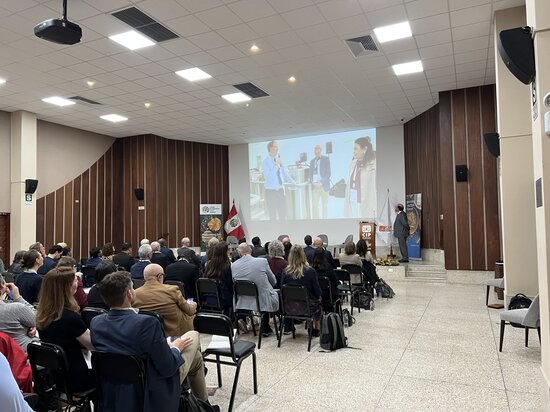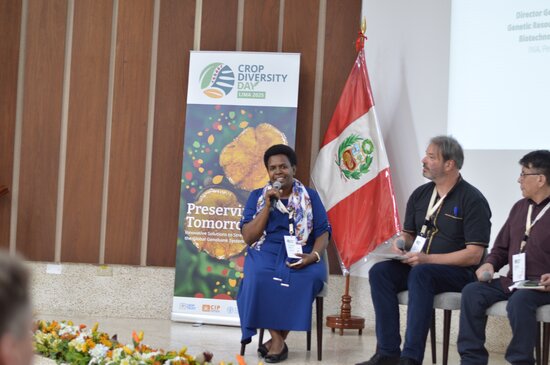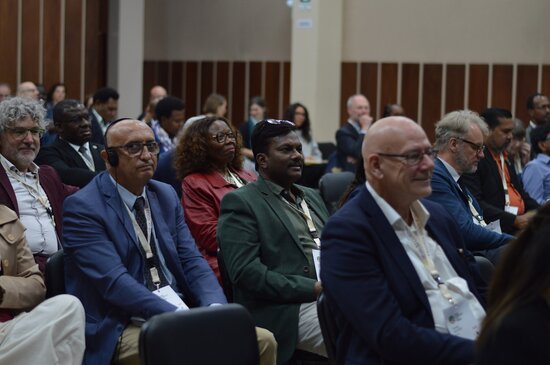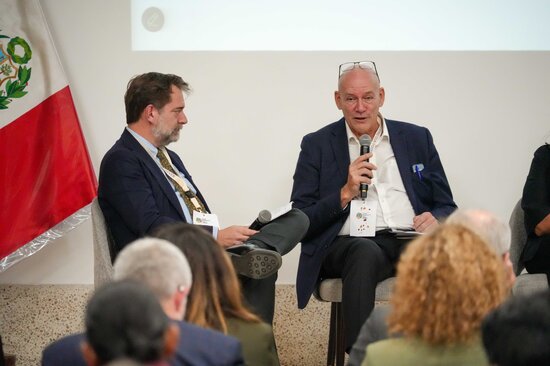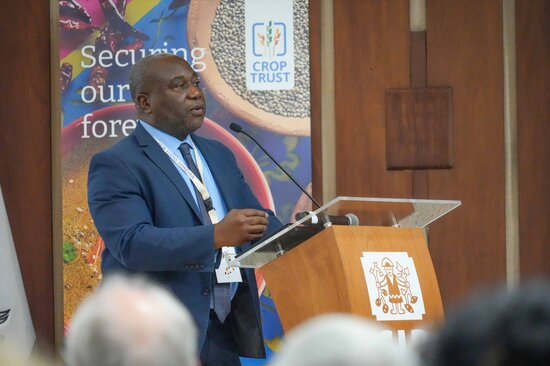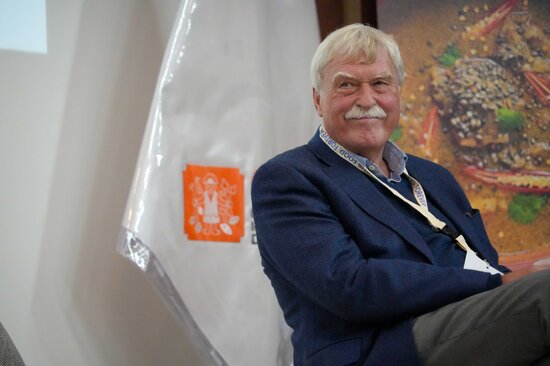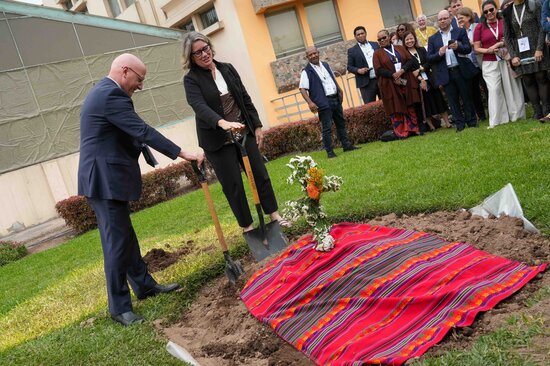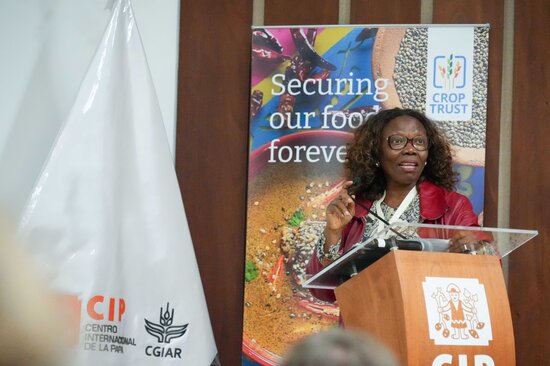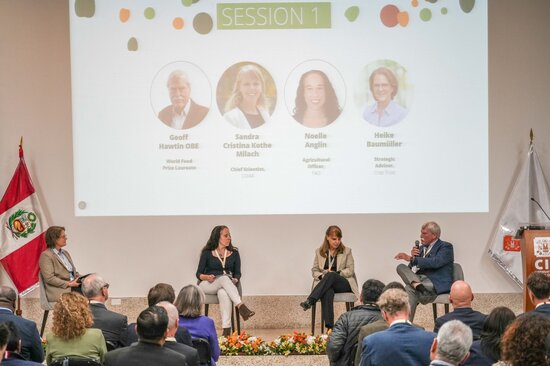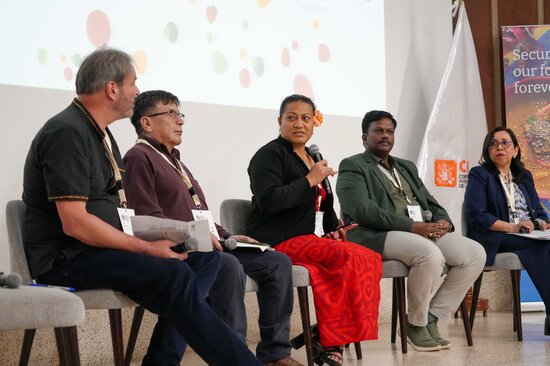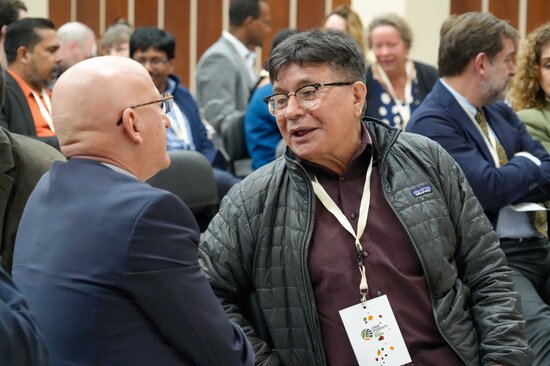Together for the Future of Food: Crop Diversity Day 2025
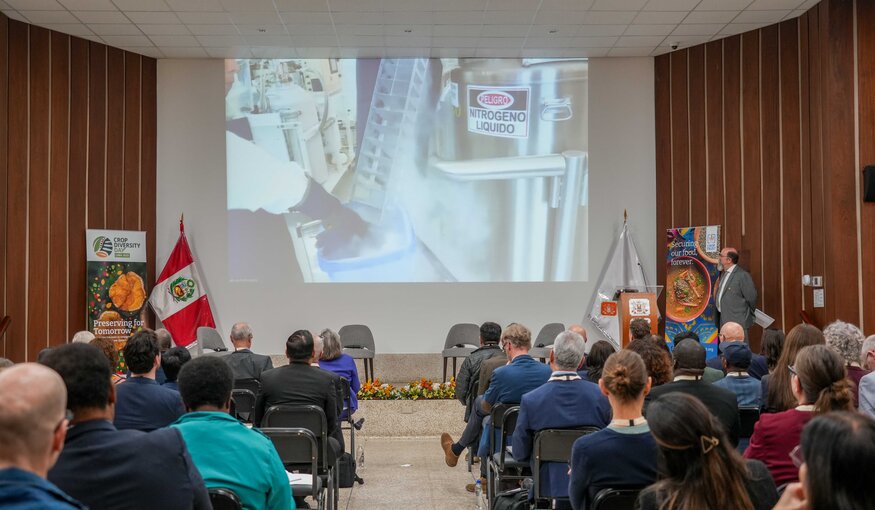
24 November 2025
On 21 November, experts and leaders from all over the world gathered in Lima, Peru, for Crop Diversity Day 2025. This milestone event, co-hosted by the Crop Trust, the Plant Treaty Secretariat and the International Potato Centre (CIP), advanced discussion and showcased action on the critical role of crop diversity in shaping a more resilient, nutritious and equitable future. Experts explored how innovation – from cryopreservation to the promotion of opportunity crops – can secure our food future.
Crop Diversity Day 2025 sets the scene for the Eleventh Session of the Governing Body of the International Treaty on Plant Genetic Resources for Food and Agriculture. In these crucial negotiations, taking place from 24-29 November, governments of the world can take significant steps towards global food security.
Peru’s incredible agricultural heritage provided a fitting backdrop for a program for Crop Diversity Day which focused on innovation, stewardship and collective action. The event took place on the CIP campus, which hosts the world’s largest collection of potato diversity.
Celebrating Innovation
A highlight of Crop Diversity Day 2025 was the first deposit into CIP’s new cryopreservation facility – the Cryo Vault – the first of its kind in South America. Cryopreservation allows plant tissues to be stored at ultra-low temperatures, providing the most secure and cost-effective long-term conservation option for crops that cannot be stored as seeds – including vital staples such as potato, cassava, banana and sweetpotato.
These crops feed billions and provide critical income in the tropics, yet their diversity is vulnerable. The Cryo Vault marks a crucial step toward building cryopreservation capacity worldwide.
Cryo Vault Manager Rainer Vollmer highlighted a key benefit – shifting from in vitro conservation to cryopreservation can reduce a genebank’s long-term conservation costs by up to 85%.
Ecuador’s Instituto Nacional de Investigaciones Agropecuarias (INIAP) became the first depositor, placing 15 groundnut and four potato accessions in the Cryo Vault under a blackbox agreement. This marks the beginning of a new era in safeguarding vegetatively propagated crops for the region. Chile and Brazil are slated to deposit diversity into the Cryo Vault in the near future.
CIP Director General Simon Heck reflected on the moment: “Eight thousand years ago, the potato originated here – and now every country in the world enjoys it. This journey is not over. By co-hosting this day, we show our strong commitment to conserve this diversity and to link it back to communities worldwide.”
Opening Opportunities
Crop Diversity Day 2025 also puts vegetables, and indeed all opportunity crops, on center stage. Around the world, food systems struggle to provide healthy diets. Vegetables – rich in essential vitamins and micronutrients – are central to overcoming malnutrition, yet their diversity remains insufficiently conserved and used. Speakers from all around the world stressed why these crops matter.
As the Pacific Community’s Logotonu Meleisea Waqainabete noted, “Opportunity crops are culturally grounded and nutritious. They provide solutions for diversifying production systems and are tied deeply to people’s identity and culture.”
The launch of Vegetables4Life, a global initiative led by the World Vegetable Center, reflects growing momentum to rescue, conserve and promote the use of vegetable biodiversity. It is a call for vegetables to be recognized as more than supplements to staple crops, but as pillars of nutrition security, culture and climate adaptation.
“Reversing the loss of vegetable biodiversity is crucial to improving diets and to making food systems more resilient. Conservation is key to human and planetary health,” said Maarten van Zonneveld, Genebank Manager at WorldVeg.
Crop Trust Executive Director Stefan Schmitz agreed: “Vegetables4Life will ensure that vegetable diversity is conserved and returned to the people who need it. The Crop Trust is working through the Power of Diversity Funding Facility to mobilize new resources to secure and promote opportunity crops for the future.”
Working as One
Throughout the program, speakers emphasized that our collaborative conservation efforts deliver the most impact when crop diversity is actively used. To meet the urgency of climate change, new pests and diseases and shifting diets, the global genebank system must become more accessible, more resilient, more inclusive and better aligned:
- Every crop collection should meet agreed quality standards.
- All unique accessions should be safely backed-up in the Svalbard Global Seed Vault, or in facilities like the CIP Cryo Vault.
- Greater attention and investment must be directed at opportunity crops, including vegetables.
- Genebanks need to collaborate more strategically among themselves and with research institutions, policymakers, industry and farmers.
Crop Diversity Day demonstrated that the global genebank system is at its strongest when its many parts work together – sharing expertise, data, technologies and responsibilities.
Reflecting this priority, the Crop Trust officially launched the Genebank Academy at Crop Diversity Day – a global online platform offering high-quality training for genebank professionals, students and researchers worldwide.
“We need to conserve crop diversity and to make sure everyone can benefit from its use. This will only be achieved through a truly global effort, involving all stakeholders working in partnership in an atmosphere of trust,” said Geoffrey Hawtin, 2024 World Food Prize winner and Crop Trust Executive Board member.
Crop Trust Board Chair Catherine Bertini added a systems-wide perspective, saying: “We started this series of events in 2023 to listen – because Crop Diversity Day is a learning experience, but also a celebration of hope intertwined with crop diversity.”
Tomorrow Depends on What We Safeguard Today
To close the event, the co-hosts issued a Call to Action urging the global community to accelerate efforts on three fronts in particular:
- Invest in cryopreservation capacity across all regions – To secure the vegetatively propagated crops that underpin livelihoods and resilience.
- Elevate opportunity crops, especially vegetables – To deliver food systems that provide not only calories, but also healthy diets.
- Strengthen the global genebank system as a whole – To ensure conservation benefits all and that diversity is effectively shared and used sustainably.
With the Treaty’s Governing Body convening in Lima, Crop Diversity Day sends a clear message – the world cannot wait. Fully implementing the Treaty, including enhancing the Multilateral System, is critical, not only to conserve diversity but to mobilize it for science, breeding and farmer-led innovation.
“On Crop Diversity Day, we reaffirm that protecting crop diversity is a shared responsibility. The Eleventh Session of the Governing Body offers a critical moment to reinforce global cooperation, advance innovations like cryopreservation, elevate neglected crops and strengthen the genebank system as a whole. Through collective action, we can secure resilient and inclusive food systems for the future,” underlined Kent Nnadozie, Secretary of the International Treaty on Plant Genetic Resources for Food and Agriculture.
Momentum
This year’s Crop Diversity Day highlighted remarkable progress – new technologies, new partnerships and a growing sense of the urgency to secure crop diversity. It also showed the way forward. Governments, research institutions, the private sector and civil society must work together with renewed energy, creativity and resolve. Because whether we have food tomorrow will be determined by the diversity we conserve today.
Categories: For The Press, For Partners, For Policymakers


